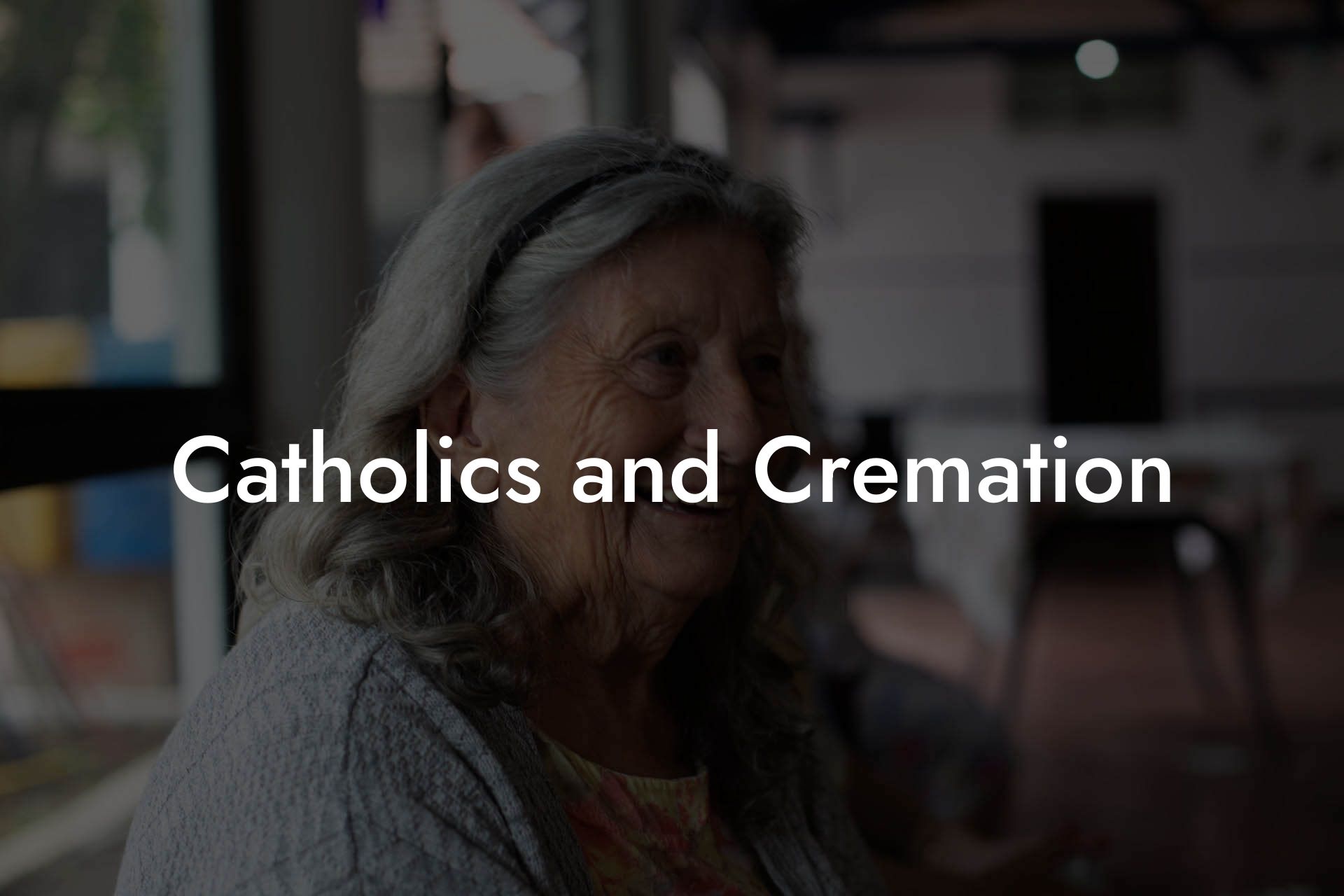Imagine a world where Catholics can find comfort and solace in cremation, a practice once shrouded in mystery and misunderstanding. Welcome to the modern era of Catholic cremation, where faith and tradition blend seamlessly with the evolving needs of the faithful.
We know how hard that can feel. You are sorting through precious memories, searching for the right words, and trying to hold it together when it is time to speak. It is a lot to carry.
That is why we created a simple step by step eulogy writing guide. It gently walks you through what to include, how to shape your thoughts, and how to feel more prepared when the moment comes. → Find Out More
Quick Links to Useful Sections
A Brief History of Catholicism and Cremation
For centuries, the Catholic Church prohibited cremation, deeming it a pagan practice that denied the resurrection of the body. However, in 1963, the Church reversed its stance, acknowledging that cremation was not in itself inconsistent with Catholic doctrine. Today, Catholics are free to choose cremation, and the Church has developed guidelines to ensure that this choice is made in harmony with Catholic teaching.
So, what changed? The Church's shift in perspective was largely driven by the growing popularity of cremation, particularly in urban areas where traditional burial spaces were scarce. As the world evolved, so did the Church's understanding of cremation, leading to a more nuanced and compassionate approach.
What Does the Catholic Church Say About Cremation?
The Catholic Church's stance on cremation is rooted in its teachings on the dignity of the human body and the promise of resurrection. While the Church still prefers traditional burial, it recognizes that cremation can be a legitimate option for Catholics.
The Church's guidelines for cremation are outlined in the Order of Christian Funerals, which emphasizes the importance of treating the deceased with respect and dignity. This includes ensuring that the cremated remains are buried or entombed in a sacred place, such as a cemetery or columbarium.
The Church also encourages Catholics to choose cremation for noble reasons, such as environmental concerns or financial constraints, rather than simply for convenience.
Why Do Catholics Choose Cremation?
Catholics choose cremation for a variety of reasons, often driven by personal, financial, or environmental concerns. Here are some of the most common reasons:
- Environmental concerns: Cremation is seen as a more eco-friendly option, as it reduces the carbon footprint associated with traditional burial.
- Financial constraints: Cremation is often more affordable than traditional burial, making it a viable option for families on a budget.
- Personal preference: Some Catholics simply prefer the idea of cremation, whether for personal or cultural reasons.
- Family tradition: In some families, cremation is a long-standing tradition, and Catholics may choose to continue this practice as a way of honoring their heritage.
Whatever the reason, Catholics can take comfort in knowing that their choice is respected and supported by the Church.
What Happens to the Cremated Remains?
One of the most common questions Catholics have about cremation is what happens to the cremated remains. The Church is clear on this point: the cremated remains should be treated with the same dignity and respect as the body itself.
This means that the cremated remains should be buried or entombed in a sacred place, such as a cemetery or columbarium. The Church discourages scattering the ashes, as this can be seen as disrespectful to the deceased and the sacred nature of the human body.
Instead, Catholics are encouraged to choose a final resting place that reflects their faith and values. This might include a traditional cemetery, a columbarium, or even a special "garden of remembrance" designated for cremated remains.
How Can Catholics Make Cremation a Sacred Experience?
For Catholics, cremation can be a sacred experience that honors the deceased and celebrates their faith. Here are some ways to make cremation a meaningful and spiritual experience:
- Hold a funeral Mass: Celebrate a funeral Mass, which can be held before or after cremation, to honor the deceased and pray for their soul.
- Use sacred symbols: Incorporate sacred symbols, such as the cross or holy water, into the cremation ceremony to emphasize the sacred nature of the experience.
- Choose a sacred final resting place: Select a final resting place that reflects the deceased's faith, such as a cemetery or columbarium.
- Pray for the deceased: Offer prayers for the deceased, both during the cremation ceremony and in the days and weeks that follow.
By incorporating these elements, Catholics can transform cremation into a meaningful and spiritual experience that honors their faith and values.
Resources and Community Support: Your Next Steps
If you're a Catholic considering cremation, you're not alone. There are many resources available to support you on this journey, from Catholic funeral homes to online communities and support groups.
Here are a few resources to get you started:
- Catholic Funeral Homes: Look for funeral homes that are specifically affiliated with the Catholic Church, as they will be familiar with Catholic traditions and guidelines.
- Online Communities: Join online forums or support groups, such as the Catholic Cremation Facebook group, to connect with others who have experienced cremation.
- Catholic Cemeteries: Reach out to local Catholic cemeteries, which often offer guidance and support on cremation and burial options.
Remember, you're part of a larger community that is here to support you. Don't be afraid to reach out and ask for guidance as you navigate the cremation process.

